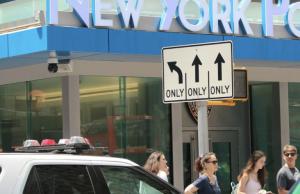
New York is known for its relentless drive to stay ahead of the curve, and now the city is turning to Artificial Intelligence (AI) to enhance its law enforcement capabilities. One of the most innovative uses of AI in the Big Apple is tattoo detection technology, which is proving to be a valuable tool in identifying suspects and cracking down on crime.
The Growing Role of Tattoos in NYPD Investigations
In a city as diverse as New York, tattoos are as common as the skyscrapers that define its skyline. For years, the NYPD has recognized the potential of tattoos as identifying marks in criminal investigations. However, the process of manually tracking and matching tattoos has always been labor-intensive and time-consuming. That’s where AI comes in.
How AI Tattoo Detection is Changing the Game
With the implementation of AI-driven tattoo recognition systems, the NYPD can now quickly scan and analyze tattoos from images, videos, and even live footage. These advanced algorithms are capable of recognizing intricate details, such as the shape, color, and pattern of tattoos, even when they are partially obscured.
For example, in a recent case, surveillance footage from a robbery in Brooklyn captured a suspect with a distinctive tattoo on his neck. Although the suspect’s face was partially hidden, the tattoo was clearly visible. Using AI technology, the NYPD was able to match the tattoo to a known offender in their database within minutes, leading to a swift arrest.
A Key Tool in the Fight Against Crime
AI tattoo detection is not just about speed—it’s about accuracy. New York’s law enforcement agencies have been leveraging this technology to solve a variety of cases, from gang-related crimes to missing person investigations. Tattoos can reveal affiliations, personal histories, and even past convictions, all of which are invaluable in building a suspect’s profile.
In one notable instance, AI played a crucial role in breaking up a notorious gang in the Bronx. Members of the gang had distinctive tattoos that signified their ranks and roles within the organization. By analyzing these tattoos, the NYPD was able to map out the gang’s structure and make key arrests, significantly reducing the group’s influence in the area.
Privacy and Ethical Considerations
As with any new technology, the use of AI in tattoo detection raises important questions about privacy and ethics. New York’s law enforcement agencies are working closely with legal experts and community leaders to ensure that the technology is used responsibly. Clear guidelines have been established to prevent misuse and to protect the rights of individuals, especially in cases where tattoos may have cultural or religious significance.
The Future of AI in New York’s Crime-Fighting Arsenal
The success of AI tattoo detection in New York is just the beginning. As the technology continues to evolve, it’s expected to become an even more integral part of the city’s crime-fighting strategy. Future advancements could include real-time detection capabilities during live surveillance, enabling officers to respond more quickly to incidents as they unfold.
In a city that never sleeps, AI is helping to keep New York safe, one tattoo at a time. As law enforcement agencies continue to embrace this technology, the streets of New York are becoming a little bit safer every day.

